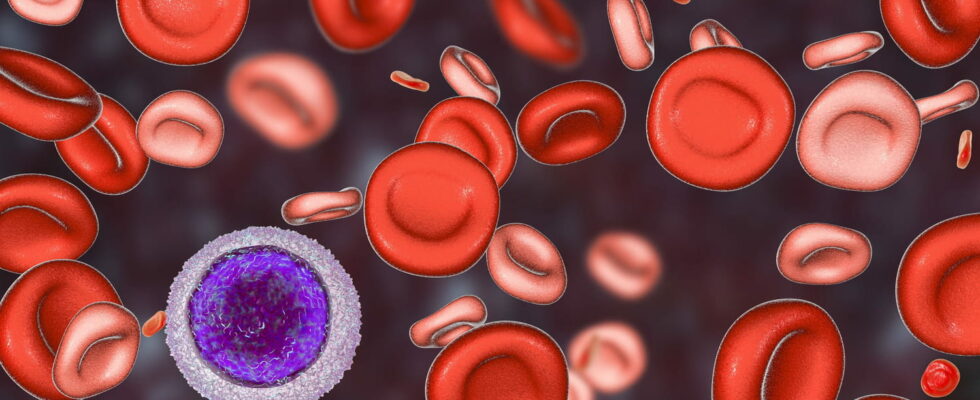Anisocytosis is not a disease, but often results from anemia. It is a blood abnormality characterized by abnormally large or small red blood cells or blood platelets.
The anisocytosis index is sometimes shown on the results of a blood test. Anisocytosis is a blood abnormality which refers to a population of red blood cells or blood platelets of unequal size. This often reflects anemia. What are the symptoms ? Is this a sign of cancer? How to treat anisocytosis?
Definition: what is anisocytosis?
Anisocytosis is a blood abnormality. “Blood cells, or red blood cells, as well as platelets have a mean corpuscular volume (or MCV) and a mean platelet volume (MPV) within a defined standard, begins Dr. Romain Troalen, general practitioner in Paris. There may be a variation in the same blood sample of the volume of cells, we then speak of anisocytosis. This anomaly does not cause symptoms on its ownbut it is the disease that caused it that causes it.
What is erythrocyte anisocytosis?
There are two main types of anisocytosis. I’erythrocyte anisocytosis relates to red blood cells.
What is platelet anisocytosis?
I’platelet anisocytosis is a type of anisocytosis that affects blood platelets.
What are the symptoms of anisocytosis?
Anisocytosis is a symptom, not a disease. It is generally associated with signs of anemia :
- fatigue,
- shortness of breath,
- heartbeat,
- feeling of weakness,
- headache…).
There may also be bleeding disorders because of platelet problems, which normally allow good blood clotting.
What causes anisocytosis?
For red blood cells, anisocytosis is manifested either by microcytosis (too small red blood cells) or macrocytosis (too large red blood cells).
► Anisocytosis with microcytosis has three main causes:
- A iron deficiency (iron deficiency) due to bleeding or poor absorption.
- Inflammation: inflammatory disease, etc
- THE thalassemiaswhich are a family of hereditary genetic diseases, such as sickle cell disease for example.
► Anisocytosis with macrocytosis, there are seven main causes:
- alcoholism chronic.
- I‘Hepatic insufficiency (poor functioning of the liver).
- The side effect of drugs (for example during chemotherapy).
- THE vitamin deficiencies B9 and B12.
- Hemolytic anemias.
- THE dysthyroidism (thyroid dysfunction).
- THE myelodysplasias (bone marrow dysfunction).
► Cause of platelet anisocytosis:
“Platelet anisocytosis, on the other hand, is always pathological: it is due to a dysfunction in the production of platelets by the bone marrow”, says the doctor. This may be due either to peripheral destruction (a disease that destroys platelets as they circulate in the blood), or to miello porolifesrative syndrome (mielo dysplastic), an abnormality in the functioning of the bone marrow, or to diseases hereditary as the May-Hegglin anomaly.
Anisocytosis is identified in the blood test via a complete blood count or NFS (Blood Count and Formula). “For example, we have a distribution index of red blood cells (anisocytosis index) which makes it possible to evaluate the variability in the size of red blood cells: between 11 and 15% the rate is normal, beyond that it is a anisocytosis”, describes Doctor Romain Troalen.
What treatment to treat anisocytosis?
Treatment will depend on the disease due to anisocytosis. For example in case of iron deficiency, iron supplements will be prescribed. The doctor will evaluate the most suitable treatment for the disease that caused the anisocytosis.
Thanks to Doctor Romain Troalen, general practitioner in Paris.
